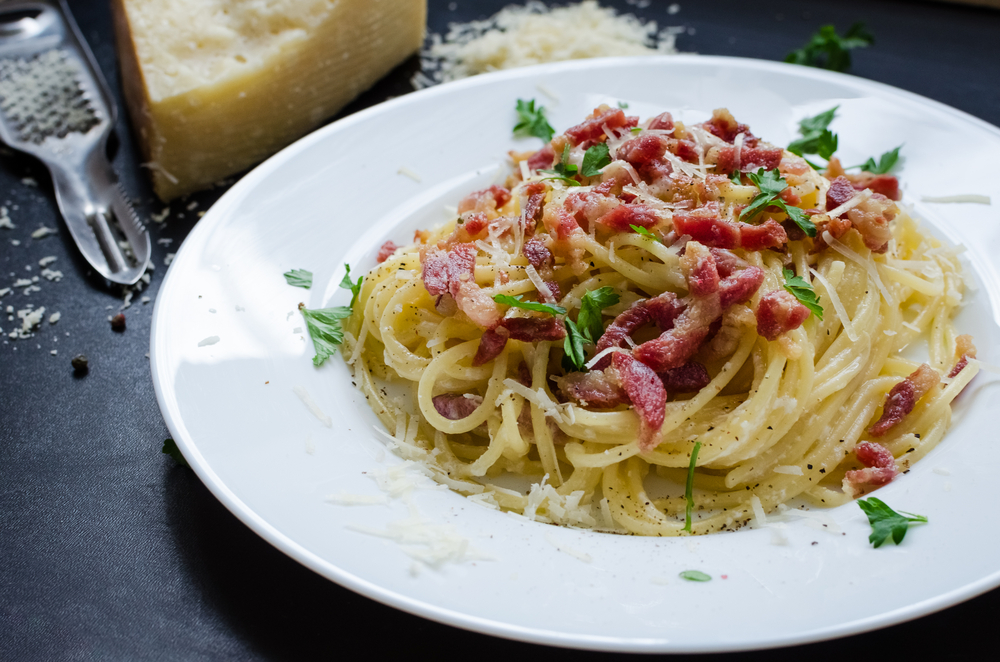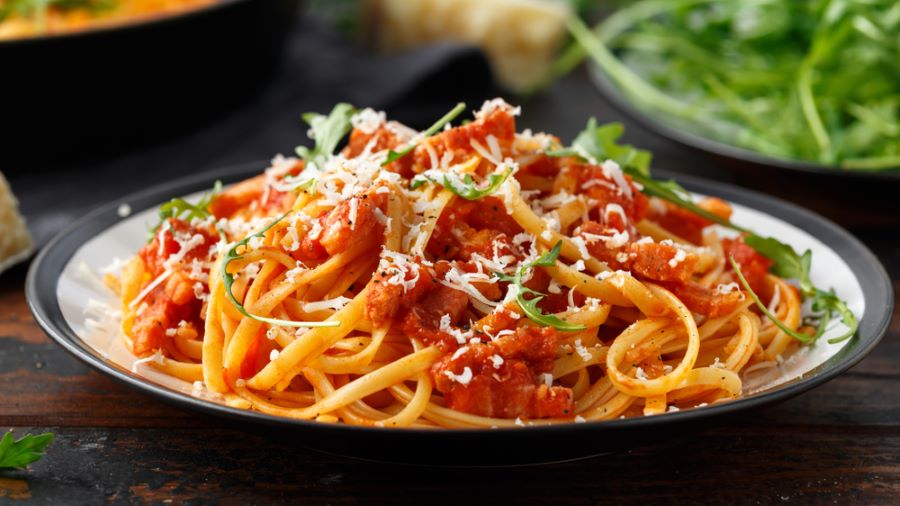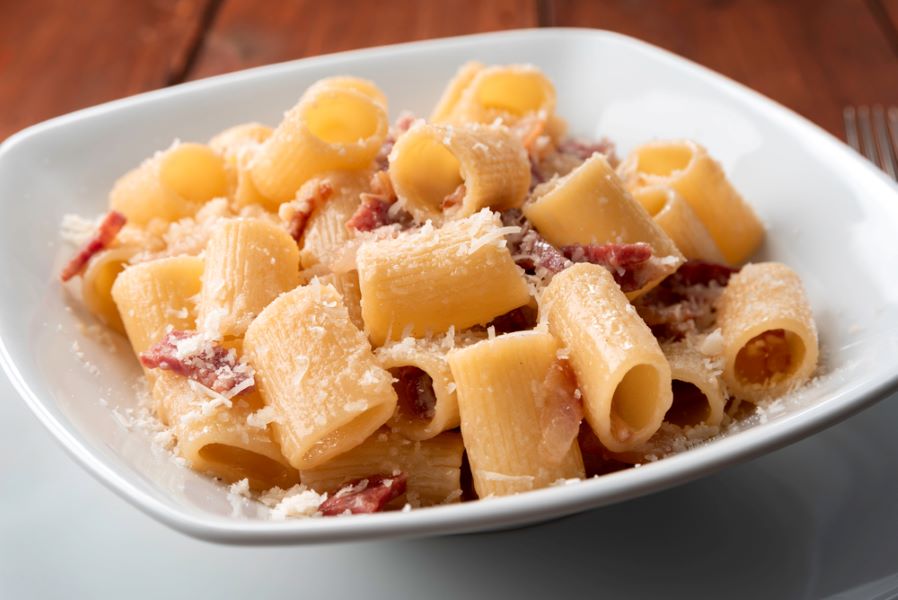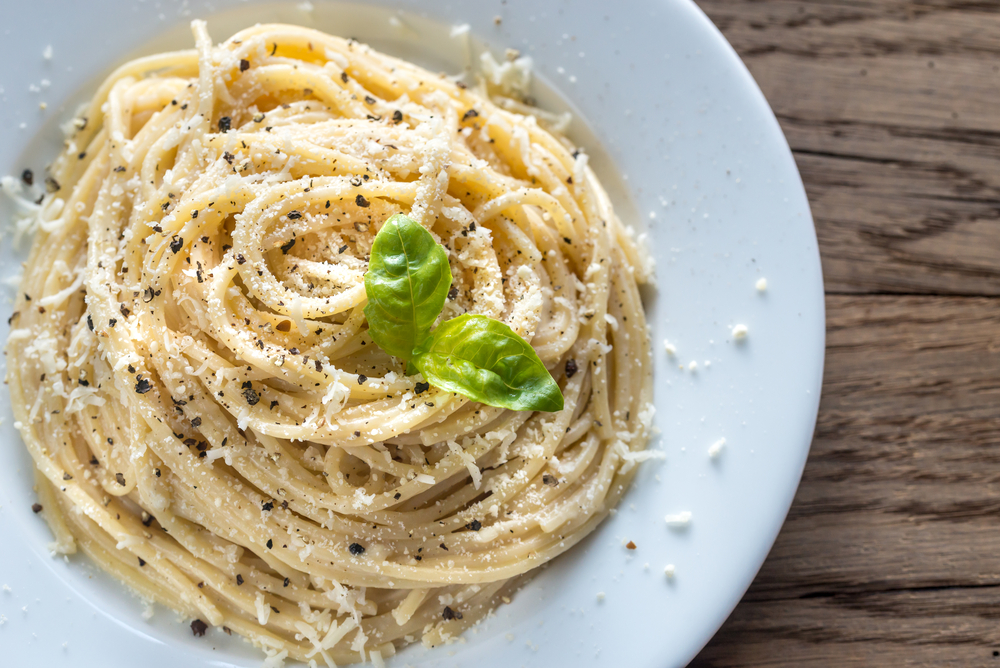Embarking on a culinary adventure through the heart of Rome unveils a rich tapestry of flavors, and at the forefront of this gastronomic journey is the city’s passionate love affair with pasta. Italy‘s historical connection with pasta dates back centuries, evolving into a cornerstone of Italian cuisine. Rome, in particular, boasts a unique pasta heritage, where tradition meets innovation.
From the iconic Cacio e Pepe, a simple yet decadent dish of Pecorino Romano cheese and black pepper, to the delicate artistry of Carbonara, where eggs, cheese, and pancetta dance on perfectly cooked pasta, each bite tells a story of Roman ingenuity. Join us as we delve into Rome’s pasta culture, celebrating the origins and evolution of these timeless dishes, and uncovering the secrets behind their irresistible allure.
Carbonara

Spaghetti alla Carbonara
Carbonara is believed to have developed in Rome sometime after World War II. Carbonara sauce is made with eggs, Pecorino Romano cheese, guanciale (cured pork cheek) or pancetta, and black pepper. The name “carbonara” is derived from “carbone,” which means “charcoal,” suggesting that this dish was originally enjoyed by coal workers.
Flavio al Velavevodetto is a popular choice for tasting an excellent Carbonara. This restaurant is situated in the Testaccio district, which is historically linked to Roman cuisine due to its former role as a meat and slaughterhouse area. The restaurant is known for its classic Roman dishes and cozy atmosphere.
Amatriciana

Fettuccine all’Amatriciana
Pasta Amatriciana originated from the town of Amatrice, which is located in the Lazio region of Italy. While not within the city of Rome itself, Amatrice is a neighboring town, and its influence on Roman cuisine is significant. Amatriciana sauce is typically made with tomatoes, guanciale, Pecorino cheese, and red pepper flakes. It’s a flavorful and slightly spicy pasta dish that has become a beloved part of Roman culinary tradition.
For an authentic Amatriciana experience, you might want to venture slightly outside of Rome to visit the town of Amatrice itself. However, many Roman restaurants also serve excellent versions of this dish. One such place is Da Enzo al 29, located in the Trastevere neighborhood. This place is known for its traditional Roman dishes, including a flavorful Amatriciana.
Gricia

Maccheroni alla Gricia
Like Carbonara, Gricia is Roman pasta dish that features guanciale and Pecorino cheese. It is considered one of the predecessors to Carbonara, lacking the eggs that are central to Carbonara’s creamy texture. Gricia is essentially a simpler version of Carbonara, with the sauce consisting of guanciale, Pecorino cheese, and black pepper. Its origins are closely tied to Roman culinary traditions.
Since Gricia is a close relative of Carbonara, many restaurants that offer great Carbonara will also serve Gricia. Roscioli is a renowned establishment in Rome that has a reputation for its high-quality pasta dishes, including a delicious Gricia. It’s located near Campo de’ Fiori.
You Might Also Enjoy: Say “Formaggio”! And Come With Us on a Cheese Tour of Italy
Cacio e Pepe

Cacio e Pepe
Cacio e Pepe translates to “cheese and pepper.” It’s another classic Roman pasta dish that has ancient origins and showcases the simplicity of Roman cooking. The dish features a sauce made primarily from Pecorino Romano cheese and black pepper. The pasta’s starch water is used to create a creamy sauce that coats the pasta. While its exact origin story is not well-documented, Cacio e Pepe is a staple of Roman cuisine.
You can savor this classic Roman pasta dish at Felice a Testaccio, locally known as “Da Felice,” in the Trastevere neighborhood. This is a beloved trattoria that has been serving authentic Roman cuisine for generations. Their Gricia is often praised for its simplicity and flavor, making it a favorite among locals and tourists alike. With its rustic ambiance and commitment to traditional recipes, Da Felice offers a genuine Roman dining experience, and their Gricia is sure to leave your taste buds satisfied.
Remember to make reservations if possible, and also be aware that popular restaurants can have long waiting times, especially during peak dining hours. It’s always a good idea to check recent reviews and recommendations to ensure you’re getting the most accurate and up-to-date information for your culinary journey in Rome.
Do you have a suggestions for a Roman restaurant that serves one or more of these delicious dishes? Let us know in the comments below!


Leave a Reply